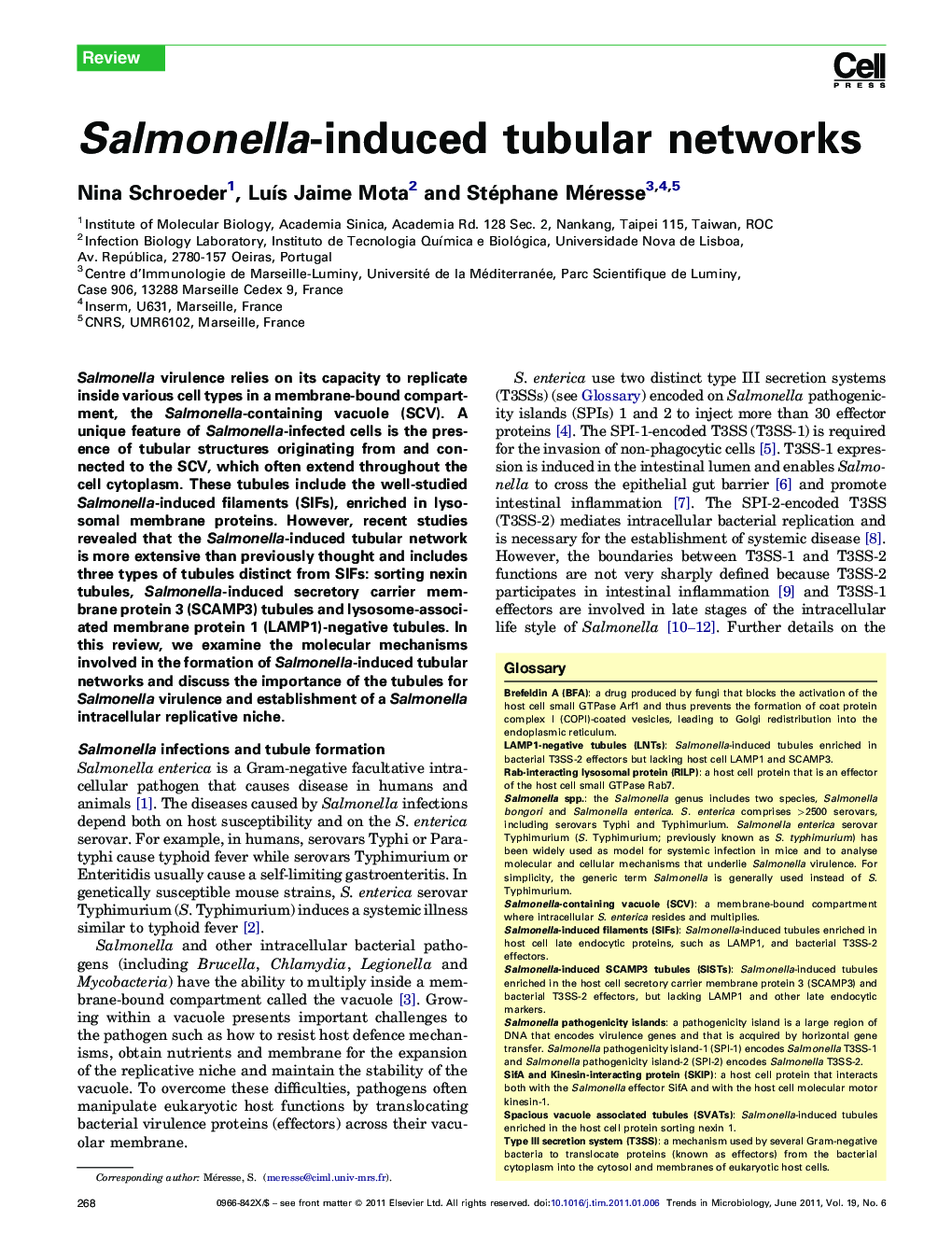| Article ID | Journal | Published Year | Pages | File Type |
|---|---|---|---|---|
| 3422317 | Trends in Microbiology | 2011 | 10 Pages |
Salmonella virulence relies on its capacity to replicate inside various cell types in a membrane-bound compartment, the Salmonella-containing vacuole (SCV). A unique feature of Salmonella-infected cells is the presence of tubular structures originating from and connected to the SCV, which often extend throughout the cell cytoplasm. These tubules include the well-studied Salmonella-induced filaments (SIFs), enriched in lysosomal membrane proteins. However, recent studies revealed that the Salmonella-induced tubular network is more extensive than previously thought and includes three types of tubules distinct from SIFs: sorting nexin tubules, Salmonella-induced secretory carrier membrane protein 3 (SCAMP3) tubules and lysosome-associated membrane protein 1 (LAMP1)-negative tubules. In this review, we examine the molecular mechanisms involved in the formation of Salmonella-induced tubular networks and discuss the importance of the tubules for Salmonella virulence and establishment of a Salmonella intracellular replicative niche.
